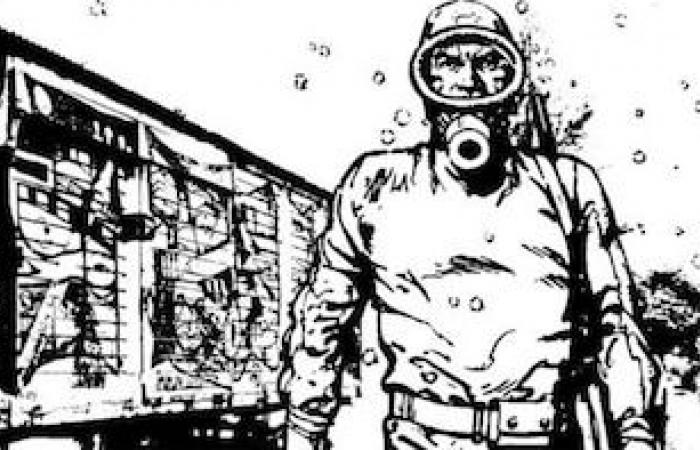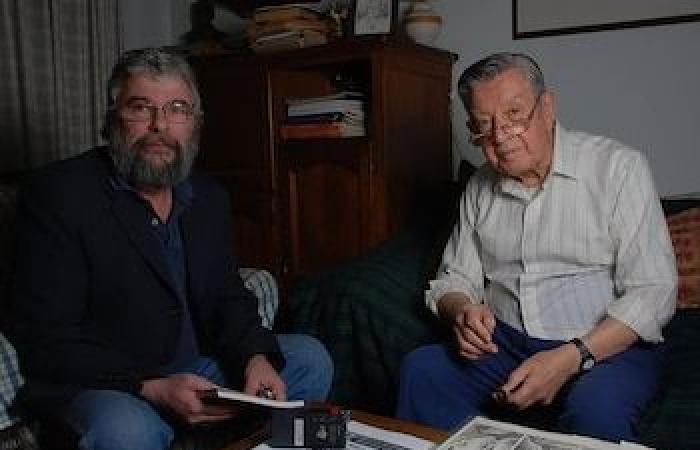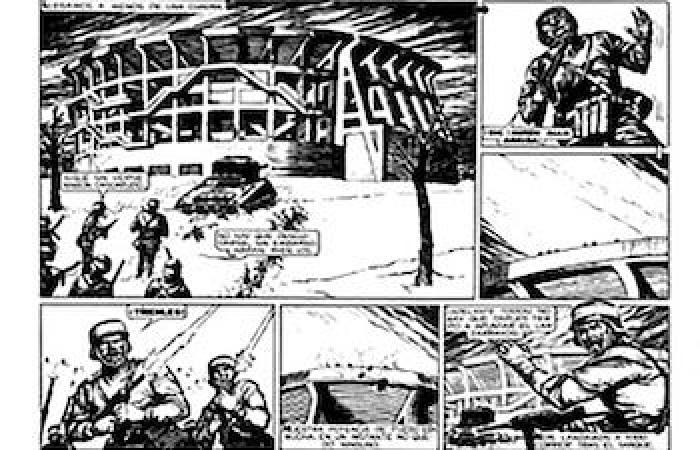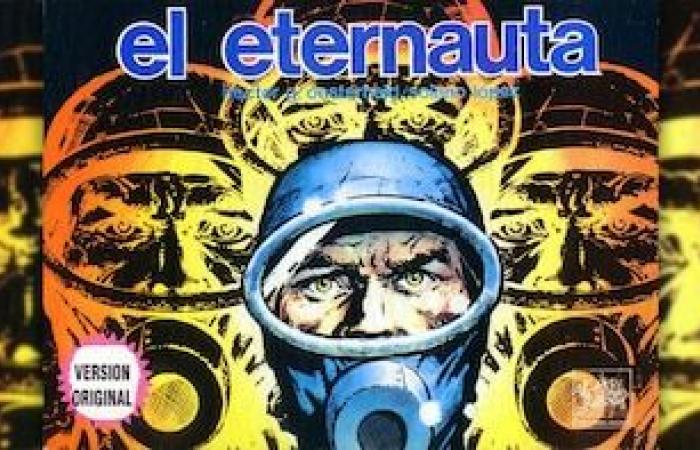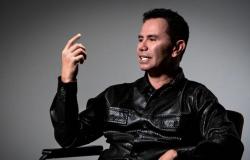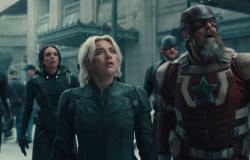when in 1957 the cartoon magazine Weekly zero hour began publishing the saga of The Eternalutaimmediate success. It was promoted as “the story of the man who comes back from the future, who has seen everything, the death of our generation, the final destination of the planet.” They were the times of the self -styled liberating revolution and the cartoon, somehow, it transmitted a certain climate that was articulated with that of the time. His screenwriter, Héctor Germán Oesterheld, and his cartoonist, Francisco Solano López, They had been working in society for some time and it was not the first success they obtained, but the impact of Juan Salvo’s story and his friends, surprised them.
We talk about that with Solano López in 2008, when the magazine Faces and masks He commissioned me to interview him for a section dedicated to characters. He received me in his department in the Once neighborhood and talked for more than two hours in a very small living room crammed with furniture. Solano López told me that neither he nor Oesterheld thought that first version of The Eternaluta With some political intent. “In any case, it was a product of chance and the collective unconscious that nest in our personalities and manifested himself in our work and that, in turn, was with the sensitivity and certain way of capturing the story that the young people of the time could have. Because the existence of a military dictatorshipof political persecutions, of resistance to the interruption of democracy allowed those readings, ”he told me.

I reminded him then an answer that Oesterheld had given the matter in an old interview and that coincided with what he told me. “The Eternaluta It began as a short story, of just 70 paintings. Then it became a long history, a kind of adaptation of the theme of Robinson Crusoe. I was fascinated by the idea of a family that was left alone in the world, surrounded by death and an ignored and unattainable enemy. I thought about myself, my family, isolated in our villa and began to ask myself questions, ”said that time, long before I was arrested missing by the dictatorship. When I repeated the phrase – I had scored – Solano smiled and said: “Yes, as is.”
When they faced the eternal, Oesterheld and López had been working together for years, with strips that took time, such as Bull Rocket. “We met in the ’50 in Editorial Aprilcollaborating in Misterixwhich was the star magazine of the time, with a weekly roll of 220,000 copies. Héctor was a very respected screenwriter who made two cartoons of great success: Sergeant Kirk, drawn by Hugo Pratt, and Bull Rocket, who drew. They were two American heroes, ”Solano told me that afternoon.

From that success, Oesterheld thought of having his own publishing house, with the orientation he wanted to give him, with Argentine characters. Invited to Hugo Pratt, a Francisco Solano López and other artists to accompany him in the adventure. To his entrepreneurship – his own – Oesterheld called him editorial border, and there he was born, for example, Rolo, the adoptive Martiana science fiction cartoon, drawn by López, whose protagonist was extraterrestrial school teacher, president of the neighborhood club and leader of the coffee bar. Came out with the launch of one of the magazines, Zero hourand catapulted her to success. In another magazines, called Frontera Like the editorial, he created another character of that type, Joe Zondaa “black head” Mendoza, from Coria Chacras, who had learned to make everything by correspondence, from putting up radios to pilot airplanes.
These characters coexisted in magazines with Western heroes or with Ernie Pykewhich was a war correspondent. Oesterheld offered a variety of proposals to readers, mixing their new Argentine creations with foreign characters of proven success. “They were two monthly magazines but, as the idea was very good, he proposed us to make a weekly, to compete with Misterix. There, in Weekly zero hourcame out for the first time The Eternalutawith my drawings, and soon Misterix He had dropped from 220,000 to 40,000 weekly copies, the rest we had captured. To me personally, and I think that the same as Hector had fun to move those characters with typical characteristics of the adventurous heroes, but with the tics of nationality, relations and Argentine sayings, ”López told me.
Over the years, The Eternaluta I would have two more versions, one in 1969 and another in 1976. In them, unlike the first, the political content was already manifest. “The challenge is that we achieve a comic with new content and values. For example, a hero who observes things from a different point of view. Or that he must necessarily act in collaboration with other characters. Thus, without saying it, in our stories we can introduce the notion of people, of common and solidary people; in short, The collective hero, ”said Oesterheld of that new stage.
Francisco Solano López again associated with him for him Eternal of 1976. The cartoonist was not convinced by the approach, but he did. “Héctor had followed her daughters in His militancy in Montoneros and had even integrated the newspaper Executive Committee Newswhere I had also published a daily strip, THE WAR OF THE ANTARTES. From that position, when they offered to make the continuation of The Eternaluta He made an eternal Montonero. I didn’t like it, I saw it bad. I was not supporting the military, but I thought that in a structured society like Argentina the armed struggle could not have the same result as in other countries with simpler structures, such as Cuba or Nicaragua. The result was catastrophic and we see it today, Oesterheld was killed and we are missing 30,000 boys who would be the basis for everything to be much better. But they are not, they do not exist, they disappeared. The survivors do not reach, ”he reflected that time in the living room of his department.
Héctor Germán Oesterheld was kidnapped For a group of tasks in La Plata on April 27, 1977 and killed in 1978, his four daughters are missing. Francisco Solano López departed into exile, accompanying his son Gabriel, who had been arrested and got the option to leave the country. In Europe he continued working, now with Gabriel as a screenwriter, making cartoons with characters Latin American history and creating a new one in societyCave.

Solano returned to the country once democracy recovered and continued working. He even added One more chapter to the saga of The Eternalutawith a script by Pablo Maiztegui and set forty years after the original version. That time, he himself wanted to give the character created by Oesterheld. “I think that in the development of that story a simplified metaphor of what menemism was, Argentine and Latin American neoliberalism, through the activity of the hands as leading characters a bit in the shadows. The reunion of The Eternalutaalready rescuing her daughter, a girl under the protection of one of the leaders of her hands. And the girl and father gather with their friends to find the mother, Elena. What results in another endless series of stories that may be in charge of the Eternauta or Elena himself, who can also tell what happened to him, ”he told me.
It couldn’t be, Francisco Solano López died at age 82, after suffering a stroke on August 12, 2011less than three years after the interview here.


